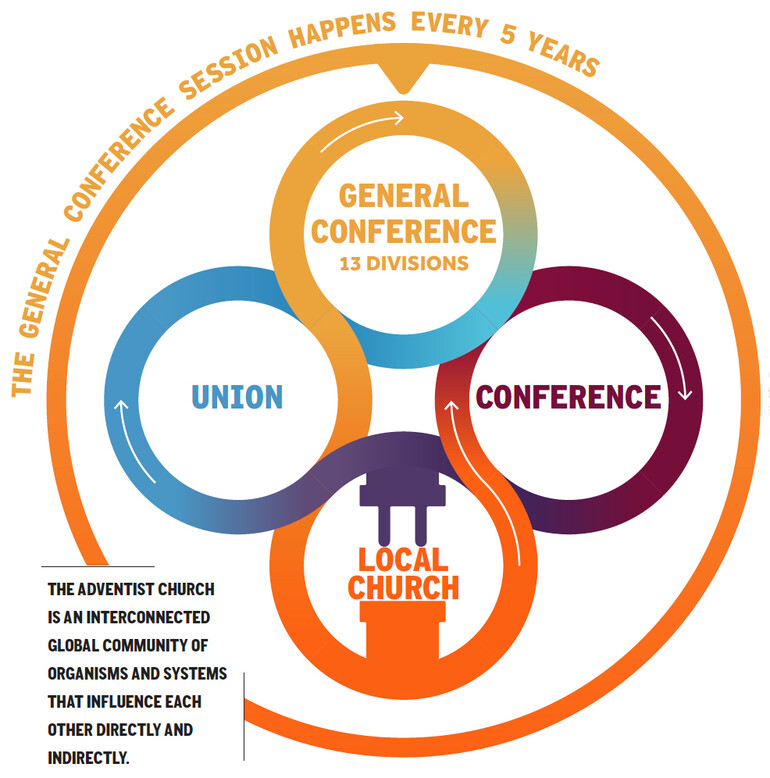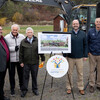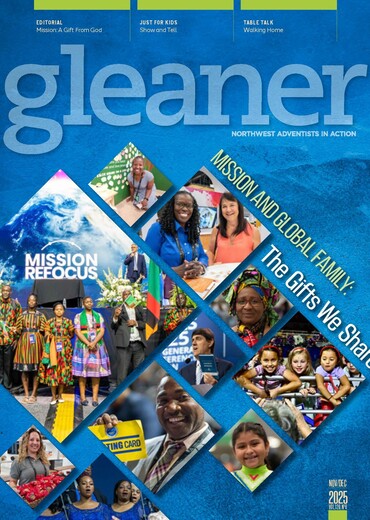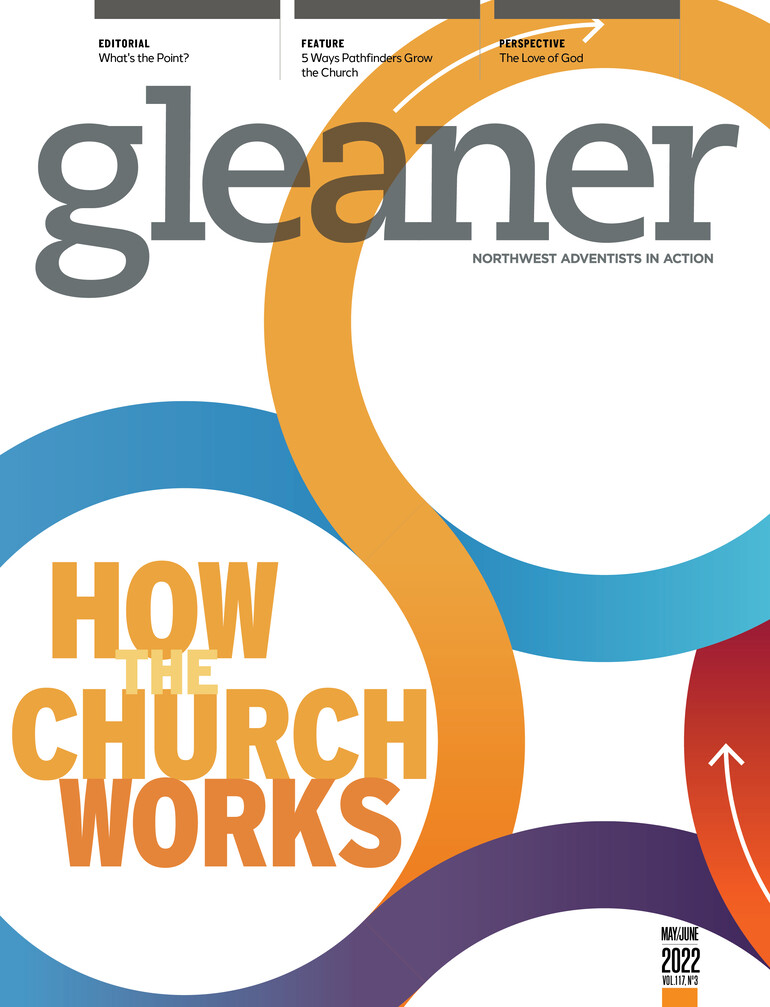A Meaningful Voice?
In 2022, Seventh-day Adventists from around the world will gather to make vital decisions about policy and leadership. From the constituency session happening in my local Oregon Conference in September, up to those happening in the North Pacific Union, Walla Walla University and the General Conference Session in June, this is a year filled with important organizational meetings.
Administrative meetings might seem distant and irrelevant to many Adventists as they go about the stresses of their own careers, relationships and lives. In fact, many Adventists may have a hard time understanding the purpose of spending so much time, money and energy on so many meetings. For those of us who wish the church would change or grow faster, it can be hard to view yet another meeting as a positive thing.
These past few years have been incredibly polarizing. From the disruption and fear brought by the COVID-19 pandemic, a renewed surge of civil rights movements in the summer of 2020, a hyperpolarized election season, a wave of natural disasters and worldwide political turmoil, Adventists from every school of thought have opinions on what the church should be doing differently.
But how do we — the local church membership — help make those ideas and goals actually come to fruition? Are we left at the mercy of our administrators, or do we carry a meaningful influence and voice as well?
Understanding the Structure
Because we live in a world full of top-down hierarchies — from company CEOs and presidents, to religious authorities like the Pope in the Roman Catholic Church — our understanding of leadership in the Adventist Church is often skewed to understand our church as a similar top-down model. But as Dr. George Knight, a prolific author and former professor at the Theological Seminary at Andrews University, told me, “We do not have a presidential system ... but more and more, we act as if it is. And therefore, whether it's the local conference, the union conference or the General Conference, we have a temptation to make it into a presidential system where the president sets the agenda.”
We do not have a presidential system ... but more and more, we act as if it is. And therefore, whether it's the local conference, the union conference or the General Conference, we have a temptation to make it into a presidential system where the president sets the agenda.
Lowell Cooper, a retired General Conference vice president, described our system this way: “The world Seventh-day Adventist Church is really a rather complex organization. We have some 90,000 churches. We have institutions, schools, hospitals, clinics, publishing houses and many different ecclesiastical units: local missions, local conferences, unions, divisions, etc.”
The Adventist Church structure can most accurately be described as interlocking and interdependent. Yet, many Adventists tend to think of the church as a pyramid, with the local church at the bottom and the General Conference at the top. In a way, this is correct.
The local church is the foundation that the rest of the Adventist Church is built upon. It's where church membership is held. This is where members are allowed to vote on church business matters and can also be elected to church leadership roles. When someone wants to get baptized or join the Adventist Church, it's the local church who is responsible for membership matters.
Next is the local conference layer. This is made up of groups of churches in a particular territory — usually either a state or geographical region. The local conference employs pastors and teachers in each territory, and this is also the layer that collects tithe — money used to maintain the church.
A group of conferences makes up a union, such as the North Pacific Union. Not only do unions support the conferences in their territory, but they also oversee Adventist colleges and universities and the operations of clinics, hospitals, media ministries and other special entities.
The final layer is the General Conference. This is the Adventist Church's global leadership body. It is split into 13 divisions that oversee different parts of the world. The divisions aren't technically their own layer but are a working part of the General Conference.
The General Conference Session is a decision-making event occurring every five years. This is when important decisions are made — electing officers, voting on changes to the official church manual and approving modifications or additions to our official fundamental beliefs.

To understand how all of these layers come together, I'll use my church as an example. My local church, in Hillsboro, Oregon, belongs to the Oregon Conference, which oversees churches and schools in Oregon and a few in Southern Washington. The Oregon Conference belongs to the North Pacific Union, which includes the Washington, Montana, Idaho and Alaska conferences. The NPUC is part of the North American Division of the General Conference, which supports unions in the United States and Canada, as well as other territories like Guam and Bermuda.
It's easy to see why people might visualize the Adventist Church structure as a pyramid. But is that really an accurate representation? Are the people on top of the pyramid in charge of the people below? Or is it an inverted pyramid with the power resting at the local church?
In reality, the Adventist Church structure is more like an interdependent ecosystem.
A Finely Balanced Ecosystem
The Adventist Church is an interconnected global community of organisms and systems that influence each other directly and indirectly. If one part of that ecosystem fails or takes over, the system can have serious issues. A good starting point for figuring out how the Adventist Church works is to look deeper at how your local church operates.
If you understand how things are at the local church level, it's almost identical at every other level of the church.
When asked about church structure, G. Alex Bryant, North American Division president said, “If you understand how things are at the local church level, it's almost identical at every other level of the church. For example, we use a nominating committee process to elect a local church deacon, a local church usher and a local church youth leader. We use the exact same nominating committee process to elect the General Conference President and all positions in between.”
Committees and constituency sessions allow for a certain amount of accountability and democracy that a top-down system wouldn't. When our system works as it was designed, decisions around church policy are made collectively by the people we choose to represent us.
Tipping The Scale
Even though our church structure provides accountability and democratic choice, there are challenges when things get out of balance. For example, if elected positions are taken up by, say, people of a certain age group or racial demographic, does it make room for new ideas? If people are nominated to fill these positions because they agree with how the church is already working, how can we challenge the system when things aren't going well? What happens when there is a growing generation gap between church leaders and younger generations, like Millennials and Gen Z?
These aren't mere hypothetical questions. Our church is facing a potential crisis. Bonita Shields, North American Division interim associate secretary, said, “Somewhere around 66% of pastors are eligible to retire. So we're looking at a big change, and I think that's going to force us to look at how we do ministry, and also how our church is structured.”
There are other ways that demographics of leadership and decision-makers don't accurately reflect the church, as well. For decades, Black Adventist leadership was kept out of decision-making conversations, committees and constituencies.
We are doing much better at including Black leaders than we were a hundred years ago. Still, many Adventist administrators tend to be white men. That is despite the demographic data of the North American Division showing that only about 40% of churches are historically White.
While the NAD has an intentional drive to have diverse administrative leadership teams, the truth of the matter is that White men are still far more likely to have access to the mentorship and support that feeds the leadership pipeline.
Another area of imbalance is gender equality. Although there are some groups of Adventists who believe women are not biblically allowed to be pastors, the General Conference officially supports women as deacons, elders, pastors and administrators. However, it does not allow for women to be ordained as their male counterparts. Instead, they're commissioned.
Officially, all pastors are paid on the same pay scale regardless of conference position, race or gender. But because certain leadership positions can only be held by ordained ministers (mainly conference, union division and general conference presidential positions), female pastors are barred from the positions of leadership that their male counterparts can access. They often face continuous and constant scrutiny through many levels of their ministry calling.
The Adventist system of representative governance, then, still remains socially and systematically limited by demographic restrictions.
While problems aren't difficult to find in our current system of governance, there are positive aspects of the system easily overlooked. One such benefit is how our church handles business meetings.
The Adventist Church isn't the only denomination to use a representative form of governing for business meetings. In some other denominations, delegates are responsible for their own expenses. In others, that burden falls to the delegate's local church.
In the Adventist Church, there is a unique difference. Delegates to any church business meeting, from the conference on up to the General Conference, have their travel costs covered for every meeting.
At first glance, paying for delegates to travel may seem like a waste of church resources. However, making sure delegates don't personally foot the bill ensures we have delegates from every Adventist territory and differing socioeconomic backgrounds in attendance to make decisions for the worldwide church. Ideally, this levels the playing field for representatives with a wide spectrum of financial resources.
Start Local
With all of these overlapping factors and details about how the church is organized, the question remains, “How can the average member participate in creating change in a large global church?”
According to Bryant, change starts at your local church. “What I encourage young people to do is to try to get involved," he said. "When you get to the division level, there are 1.2 million people in the North American Division. So you're one of 1.2 million, and the chances of getting involved in the vision and process are less likely… at your local church level, you may be one person among 200 or 300 people, but the process is the same, and it's a great learning opportunity on how the church operates. Once you get that experience, or you sit on that board with a pastor or local conference president, they may be looking for someone — because people are saying, ‘We need to get young people involved,’ at every level of the church! So the easiest place to get involved is the place that's closest to you, whether it's at the local church or the local conference.”
We need to get young people involved at every level of the church! The easiest place to get involved is the place that's closest to you, whether it's at the local church or the local conference.
For anyone wanting immediate change, feedback like this can feel overwhelming. It can be a lifelong commitment at a local level before the possibility to participate beyond it arises. And yet, there's a reason to hope. Each of us can have an immediate voice by connecting with our elected delegates at the conference, union and division levels. Build relationships and participate in meaningful conversations to help those chosen representatives make informed decisions.
Why Not Change?
Being a part of organizational decision-making and change can take a lot of time, energy and prayer. At times, it can be incredibly frustrating. Sometimes it's easy to be discouraged and ask why we continue using such a system?
For all of its issues, our model of governance also offers a level of resistance to autocratic and erratic leaders that might, in another model, be able to take the Adventist Church in their own direction. Church policy, while a dry subject to read about, protects the church from hasty decision-making that could potentially cause incredible damage.
Though the process is slow, even the policies that shape church organizations can be changed through our voting process if given enough time and interest. Kyoshin Ahn, NAD undersecretary, explained a little about how policy works to benefit us. “A recommendation for a new policy or the revision of an existing policy comes to us from every direction," said Ahn. "It comes from local conferences or unions or various denominational entities. The reason I'm saying that, is that policy is dynamic. It is not fixed, although it is fixed in writing — it is dynamic and can be amended.”
Historical Perspective
In the early iterations of our church, there was a time when Adventists did not want an organizational structure of any kind. As a people who were pushed out of their former churches for their beliefs in the second coming of Jesus, abolitionism and other movements, they were incredibly sensitive to the ways institutional baggage could become an obstacle to the urgent mission they believed God had set before them. But they soon realized that an established organization would help them carry out God’s mission in the coming years.
For example, in order for Adventists to receive conscientious objector status during the Civil War — to avoid bearing arms against their fellow man — Adventists had to belong to an official religious organization. To run their publishing houses, they needed to purchase property and equipment and register their publications.
As the church organization grew it became complex. Today, with more people operating across the globe, the Adventist Church’s decisions must be made with increasing care for the massive spectrum of humanity they serve. Policies, leadership and decision-making bodies are a vital part of that process in our modern-day, and they remain an important way a local church member can participate in shaping the Seventh-day Adventist Church for future generations..
This article was adapted from episode 3 of How the Church Works, a podcast written and produced by Heather Moor, Nina Vallado and Kaleb Eisele, and sponsored by the Adventist Learning Community. To listen to the full episode, hear interviews with the administrators quoted in this article or to learn more about the podcast, visit howthechurchworks.com.










